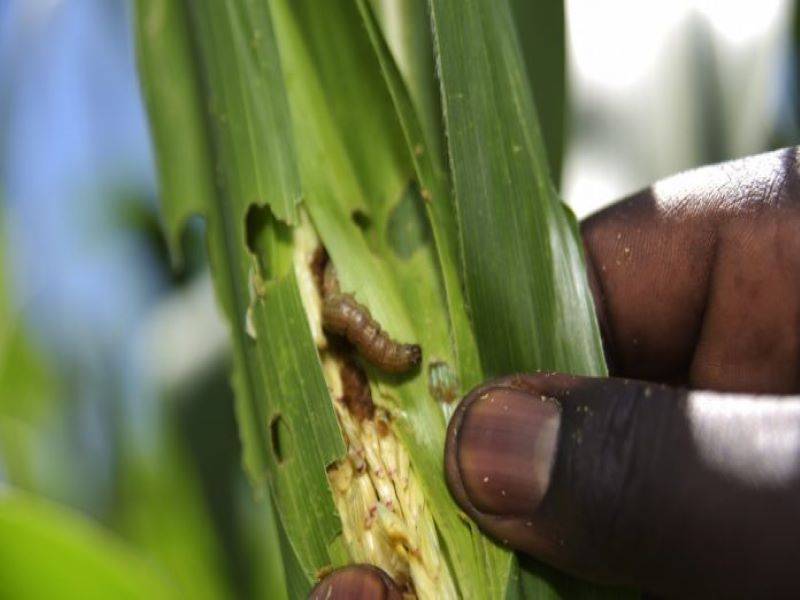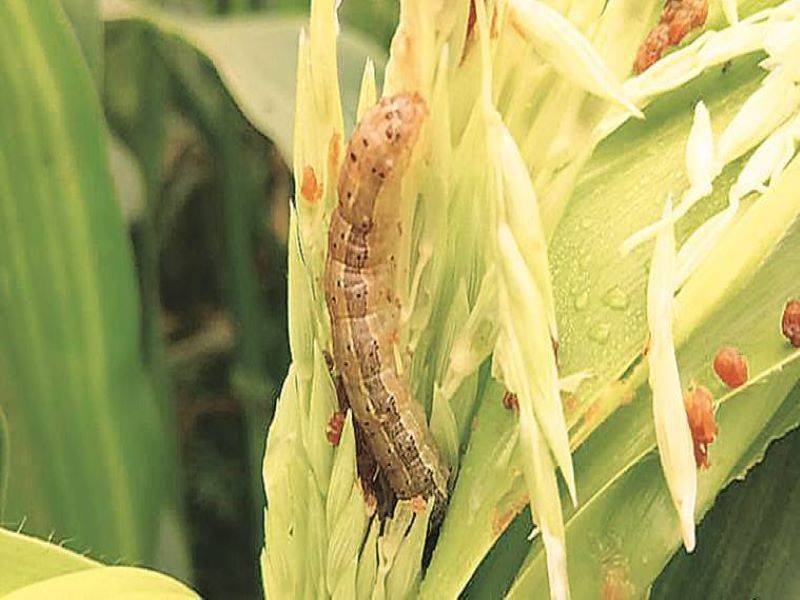
Armyworms or Fall Armyworm (Spodoptera frugiperda) mainly feed on rice by cutting off leaves and young seedlings at the plant's base. If we look at the armyworm cycle then a single armyworm egg mass contains hundreds of eggs. Each female lays approximately 800 to 1000 eggs during its lifetime of about one week.
Even though they are nocturnal if we look at adult armyworms it survives more and produces more eggs when the temperature is at 15°C and when plants are naturally fertilized. Periods of drought followed by heavy rains and the presence of alternate hosts also sustain or kill the development of armyworms.
Other crops than rice which armyworms damage are cotton, tobacco, maize, peanuts, and even fruits such as apples, oranges, and many more.
So, how we can identify that it is an attack of armyworms:
-
Basically, armyworms feed on leaf tips and along leaf margins and when they eat whole leaves, they can remove them completely or leave only the midribs.
-
Armyworm damage can be mistaken for cutworm feeding so avoid this follow the characteristic form of armyworm damage that is leaf removal. To confirm, check for the presence of the insect and its egg mass can make sure it is armyworms.
The rice armyworm can be a problem at all stages of the rice crop as the yield losses can occur when the population is high. It becomes very destructive and can even totally damage the host plant. So, during an outbreak, armyworms become highly abundant and can move in large groups from field to field to feed and attack the crops.

How manage it:
-
Flooding seedbeds is the best defence against armyworms and this prevents armyworm from infestation. Even establish seedbeds far from large areas of weeds.
-
Plough fallow land and clean the field and remove weeds will definitely help to reduce this worm.
Certain control measures required for them are:
-
Place ashes in the trenches to make it more difficult for the caterpillars to escape and even place branches around fields to give armyworms a place to congregate where they are easily collected by hand.
-
Wasps and spiders are the biggest enemies of armyworm so don’t kill them
-
You can use Insecticides but try to make a last resort for armyworm control go for natural methods.
Chemical methods for large invasion as Integrated Pest Management (IPM):
Before spraying insecticides, check the number of fall armyworms if in large number then apply chemicals.
Alpha-cypermethrin (e.g. Fastac) and chlorpyriphos (e.g. Tifón) is recommended at 20 to 40 ml per 20 litres of water. It should be done when plants show 3-6 leaves.
In one cycle, you can spray Alpha-cypermethrin; in the following one, chlorpyriphos, so that you do not use always the same insecticide in consecutive cycles for making it work efficiently.
S.K. Tyagi, Scientist Horticulture at Krishi Vigyan Kendra, Madhya Pradesh also suggests certain measures that can be taken to control fall armyworm in maize like for starting phase neem oil (1500ppm, 1 litre of this in 200 litres of water can cover an acre of land) can be sprayed or even Bacillus thuringiensis (Bt) - 400grams, 1 litre of this in 200 litres of water can cover an acre of land.
If more than 10 per cent of the crop is affected you can go for Chlorantraniliprole- 18.5 % SC, 60 ml of this in 200 litres of water can cover an acre of land. Even Thiamethoxam (12.6%) along with Lambda-cyhalothrin (9.5%) ZC, 50ml of this in 200 litres of water can cover an acre of land. These can be used to save crops.
When using a pesticide, always wear protectives and take other measures for your clothing and follow the instructions on the product label, such as dosage, the timing of application, and pre-harvest interval.

















